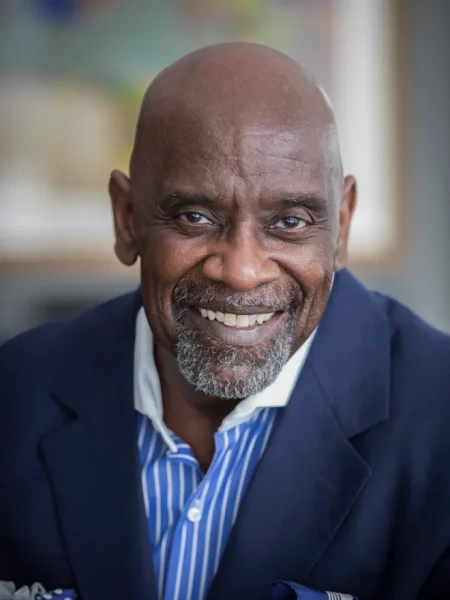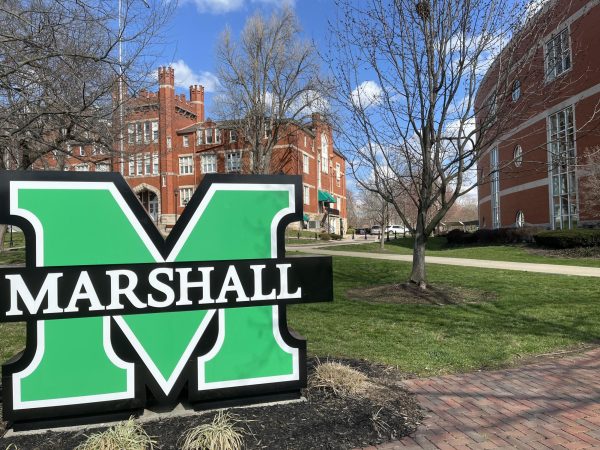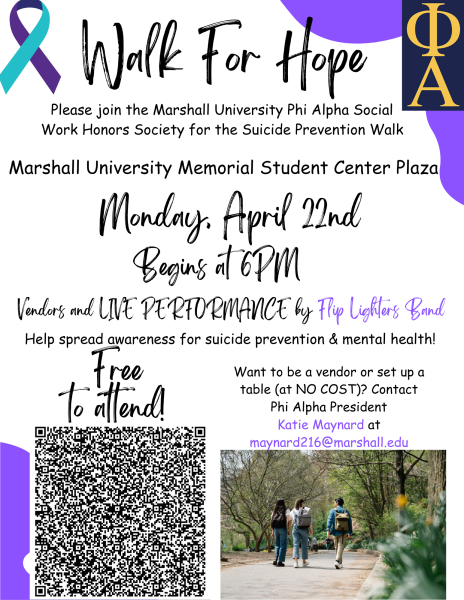Arthur Weisberg Family Applied Engineering Complex expands
More stories from Britanie Morgan
Funding for The Arthur Weisberg Family Applied Engineering Complex came from state funding, university bonds and private gifts such as the Arthur Weisberg family.
Dr. Wael Zatar the Dean of Marshall University College of Information Technology and Engineering said planning started less than four years ago, and planning took less than one year.
“That was a very difficult time because we had to have so many meetings in order to make sure we had the best facilities for the students, the programs we were currently supplying and the ones we would be developing over the next few years.”
The fourth floor includes the Marshall University Research Corporation room, where research projects and grants will be developed and Marshall Institute for Interdisciplinary Research which is a key vehicle for advancing regional economic development.
The first three floors are dedicated to engineering labs and classrooms. Many labs in the building have not existed before at Marshall. Math, Chemistry and digital forensics also housed in building as well.
The Advanced Materials Testing Lab will bring bigger and better ways of testing new materials.
“It’s a lab that would allow its users to bring expertise from all over the nation and conduct research that will benefit many organizations in the region,” Zatar said.
The lab will allow students to manage infrastructure and develop new materials.
“Students can customize test specimens that they can put in the lab and under the expected loading scenarios they will be able to make judgment calls about the sufficiency or deficiency of those materials and find better solutions to accommodate changes,” Zatar said.
Assistant Professor Gregory Michaelson will be using the new lab quite a bit.
“The new lab is very advanced, I could not have been happier in terms of its capabilities,” Michaelson said. “It really is one of the most advanced facilities you will find. We are going to be able to serve some significant needs in there.”
He said the facility will allow students to test structure that they have not had access to in the past.
“Down the road what we’d like to do is let the students design a structure,” Michaelson said. “Then later on in the semester we construct it, go down there, fail it and then see if their math matches what we really did. Having a facility like that really allows us to do that.”
The Dean said he is certain that if it will fit into the lab the students can test it.
“The lab has been designed so that it will allow for very heavy testing scenarios such as actual bridge beam, if it fits it can be tested.”
There will be limitations on space but model sizes can be made as well. A 20 ton crane can carry material to any point in the lab as well.
A conference room above the lab will allow others to see what is happening in the lab and analyze data outside the lab.
Also two sub labs will be located off from the Advanced Materials Testing Lab.
“This will be a great deal because it will provide students with hands on experience they have never had in the past,” Zatar said. “They will be able to see things they have never seen and have experience in this technology so that when they graduate if they join places that have this technology they will be completely up to date and ready to hit the ground running.”
Collaborative stations throughout the building allow five students to work at once by connecting any type of technology to the screen so all students can see one another’s work. These stations are located outside of staff offices to ensure the students have access to faculty more readily.
“We are trying to efficiently utilize every inch of the area,” Zatar said. “Every small detail that needed to be taken care of was taken care of at the time of the design so we know exactly our limitations.”
The new classrooms are equipped with furniture that is not stationary. All tables and desks can be moved to accommodate students and their individual learning process. Tables and chairs can be grouped together for collaborative work, which is encouraged by the college.
“There are a lot of collaborative spaces for the students to get together and learn from each other which we strongly encourage,” Assistant Professor Jeff Huffman said.
Classrooms and labs are also equipped with a “Smart Podium” which connects to a screen in the classroom to display information. The idea behind this technology was to better use computer systems and distributes files to students not only during lab time but later in the semester as well.
“We are providing the highest technology in classrooms and the highest technology in the labs,” Zatar said. “The equipment is probably new to the region. All the classrooms and labs have been designed to use the latest technology. That will really benefit the students.”
Some classrooms were designed with removable walls in order to open areas for larger groups of students or for the use as conference and training rooms.
“When we designed the classrooms we designed them for maximum flexibility,” Zatar said. “We can rearrange anything at any time for any reason.”
The east wing of the building is shorter than the west wing. This is because the entrance of the building is centered with the main entrance of the university. The student center can be seen through the lobby of the building.
The entrance of the building is also aligned with one of the stoplights and crosswalks on 3rd Avenue in order to allow students to safely cross the street when going to and from class.
Every part of the building can be used as a learning tool for students according to Zatar.
“We know that if a student is interested in engineering he or she wants to see what they are learning, so the stairs are designed as such so students can see the support beans,” Zatar said. “If we can expose that, that can be a huge learning mechanism. Everything on the building that can be used as a teaching tool has been used.”
There are 14 screens in the building that will be used to display achievements, important event, and classroom assignments.
Huffman said he is excited for the opportunities the new facility will offer students. “It’s going to be a fantastic opportunity for the students to experience bigger and better lab space as we expand,” Huffman said. “Brand new state of the art facilities, you cant ask for anything thing better than that for making a program expand.”
The College of Technology and Engineering is hoping the new facility will open up new opportunities for students now and in the future.
“It really does open avenues for research and teaching that we didn’t have before,” Huffman said. “It’s going to open up opportunities for students to come here and get them to look at Marshall. Hopefully it will increase our enrollment.”
The Arthur Weisberg Family Applied Engineering Complex will open august 17 for all students.
Britanie Morgan can be contacted at [email protected].
Your donation will help continue the work of independent student journalism at Marshall University. If you benefit from The Parthenon's free content, please consider making a donation.





Connie Ferguson • Aug 13, 2015 at 4:32 pm
Britanie Morgan can be contacted at [email protected].
Please change the spelling to Arthur “such as the Author Weisberg family and The Author Weisberg Family Applied Engineering Complex will open august 17 for all students”.